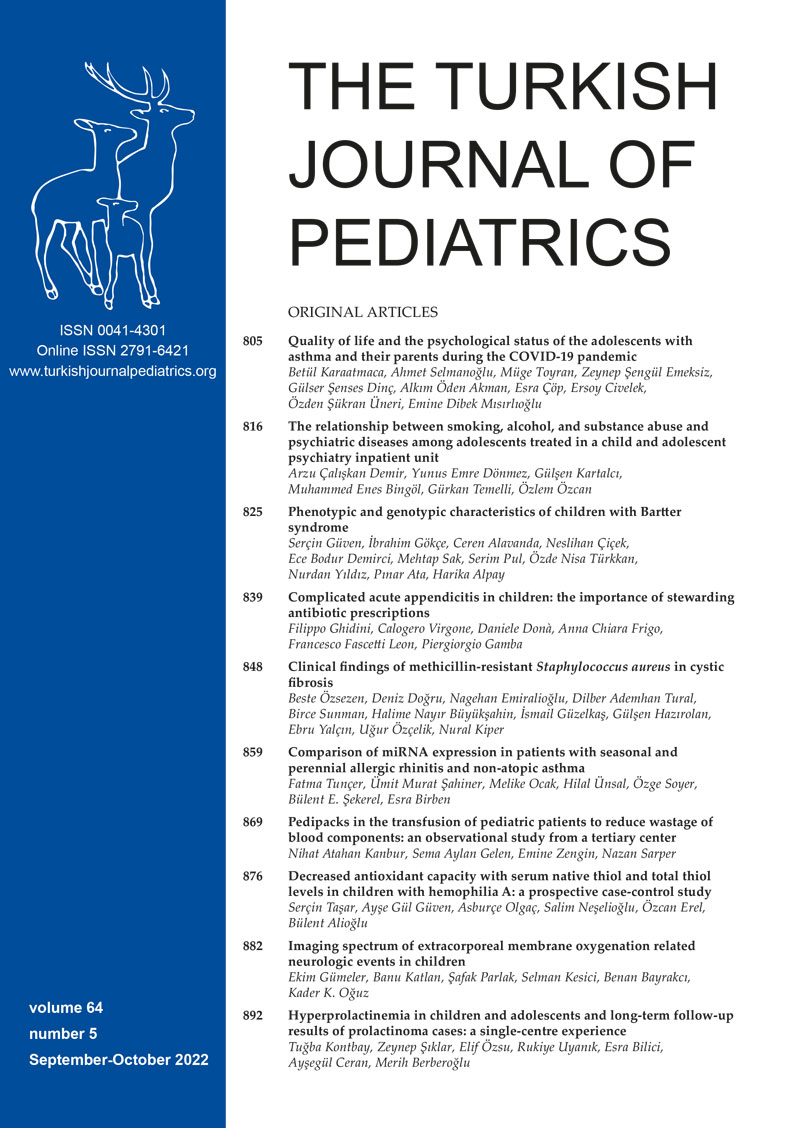Abstract
Background. MicroRNAs (miRNA) are small non-coding molecules that play a significant regulatory role in several allergic diseases. However, their role in allergic rhinitis is still not clearly understood. The aim of this study was to identify the candidate miRNAs that can discriminate between different forms of allergic rhinitis and also differ in and out of the allergen season.
Methods. The study included 20 healthy children, 20 patients with seasonal allergic rhinitis (SAR), 20 non-atopic asthmatics (NA-A), and 12 patients with perennial allergic rhinitis (PAR). Patients with SAR were evaluated comparatively in and outside the allergen season. The changes in the expressions of selected miRNAs (miR- 125b, miR-126, miR-133b, miR-181a, and miR-206) that were found related to the allergic diseases according to the literature were determined using quantitative polymerase chain reaction.
Results. In the SAR group, expression levels of miR-125b (p=0.040) and miR181a (p=0.014) were lower than in the controls outside of the allergen season. Expression levels of miR-181a were different between patients with SAR and NA-A (p=0.003), also between the SAR and PAR (p=0.001) groups in multiple comparisons. In contrast, the expression of miR-206 was found to be decreased in patients with NA-A and PAR compared with the controls (p=0.005 and p=0.024, respectively). In correlation analysis, expression levels of miR-125b and peak expiratory flow (PEF) values were found to be negatively correlated in the SAR (p=0.013) and PAR (p=0.029) groups. The expression level of miR-206 was positively correlated with total IgE levels in PAR (p=0.007). Receiver operating characteristic analysis revealed that miR-125b and miR-181a predicted the risk of SAR (p=0.040 and p=0.014, respectively), and miR-206 for NA-A and PAR (p=0.005 and p=0.024, respectively).
Conclusions. Our study showed that expression levels of miRNAs were different according to the type of allergic diseases and the presence of allergens. miR-181a and miR-125b can be candidate biomarkers for SAR, and miR-206 for NA-A and PAR.
Keywords: allergic rhinitis, asthma, epigenetics, microRNA
Copyright and license
Copyright © 2022 The Author(s). This is an open access article distributed under the Creative Commons Attribution License (CC BY), which permits unrestricted use, distribution, and reproduction in any medium or format, provided the original work is properly cited.














